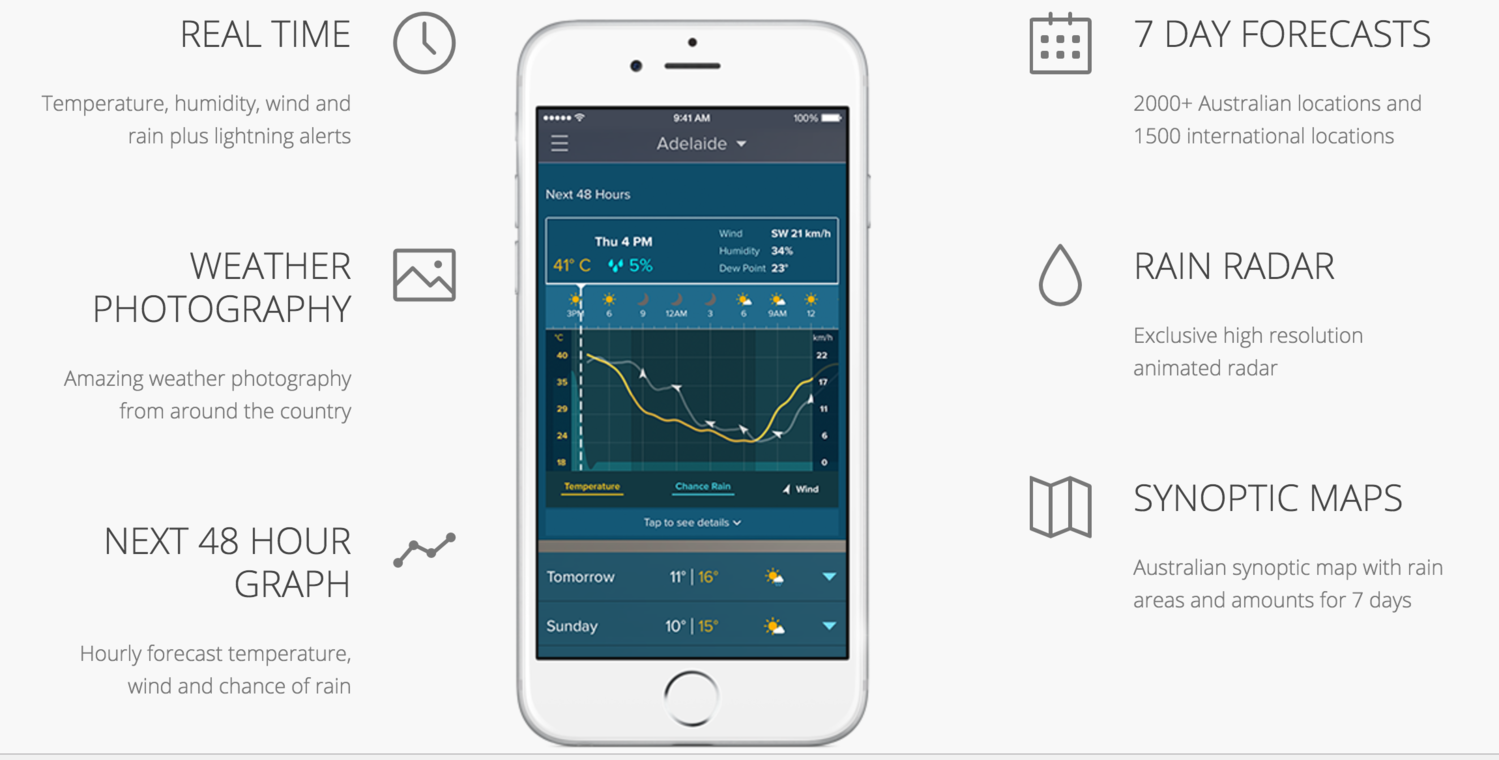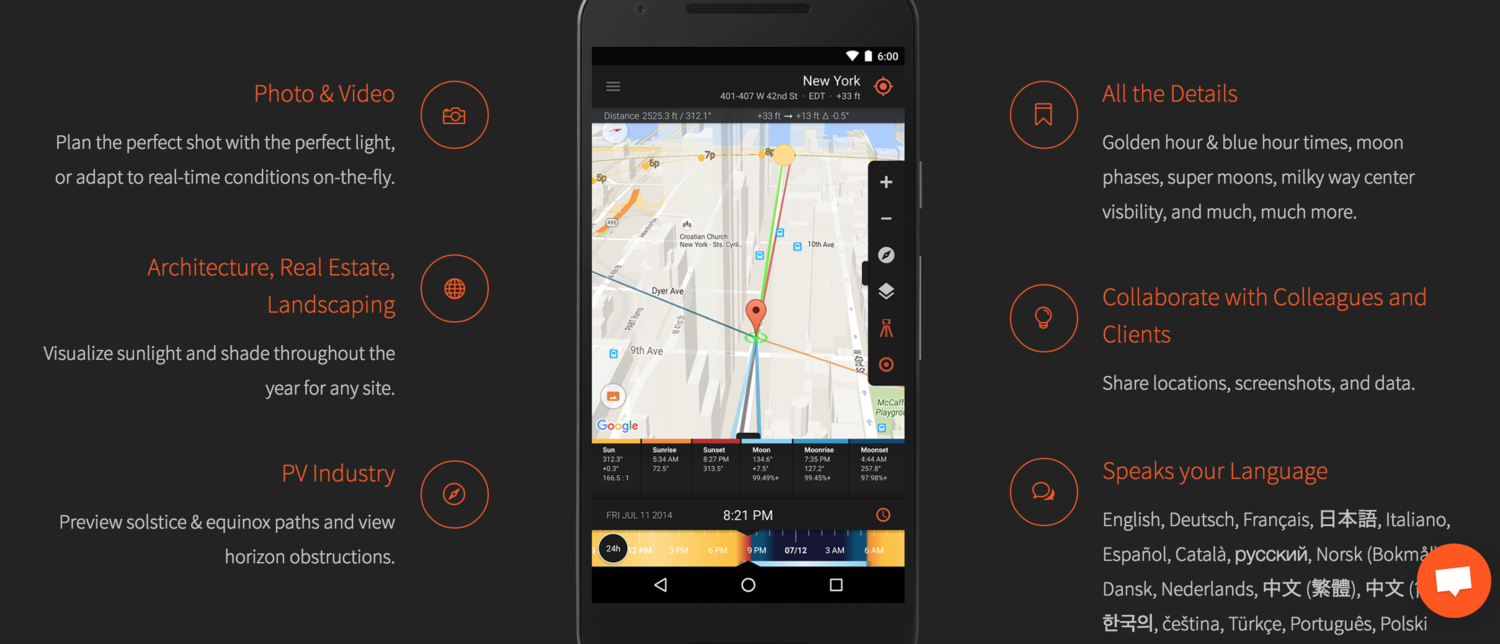Landscape photography is all about patience, preparation, and planning. Here are five simple tips to help make sure your next landscape outing is a success.
Read the Weather
A good weather forecast is important when you're trying to work out if it's worth dragging yourself out of bed at five in the morning in search of the perfect landscape. Sometimes you get the best shots when a big storm is coming or just as the sky is clearing after a storm has passed. And while you probably won't be hugely motivated to get out there when the weather is bad, sometimes that's the best time to go. As far as weather reports go, many photographers use the Bureau of Meteorology website – bom.gov.au – which offer a wealth of data covering most places around the country. Does your country have an app from the Bureau of Meteorology? Among other things it should include the latest radar maps and 7-day forecasts. It should also offer sunrise, sunset times, blue hour and golden hour.
Weatherzone Features include realtime, 7 day forecasts, rain radar, synoptic maps, 48 hour graph.
Screenshots from Weatherzone app for iOS and Android. Any suggestions for your country?
Light
Usually, the best light for landscape photography occurs during the golden hours around sunrise and sunset. Knowing the exact time and place that the sun will rise and set can be really helpful when you're planning your shoot. There are plenty of places where you can find out when and where the sun will rise and set, but the "Sun Surveyor" app for iOS and Android phones and tablets is particularly useful for photographers. You can check the angle of the sun at a particular time and date, or see the sun and moon positions, sunrise and sunset times, moonrise and moonset times, solar noon, golden hour, blue hour (before sunrise and after sunset), moon phases, shadow ratios, and much more. A 3D compass, augmented reality view, and interactive map offer many practical uses for photographers and filmmakers. Sun Surveyor costs $9.99 or there's a free "lite" version with fewer features.
sun surveyor features great for real estate, landscape or architectural photography.
Find out when and where the sun will rise and set with Sun Surveyor.
Photo Research
If you're envisioning a location for the first time, you can save yourself hours of mucking around by researching the places where other photographers have taken great photos. Google the location and look for images that you like. If you can, find out when and where they were shot. A useful site is 500px which showcases photographer's landscape photos from all over the world. Some photographers note the GPS coordinates of the location, and when the image was photographed. Some images also include metadata info about the photograph including details like aperture, shutter speed, ISO, lens, and camera model.
Image by Pablo Gomez Sal google map pinned on 500px.
Research landscapes taken at the location you're visiting at 500px.
What to Pack
Once you know when and where you're going, what the weather will be like when you get there, and what type of shots you are hoping to capture, you can start organizing a gear list. Apart from your camera, think about the lenses you will need. If you are traveling to a location for a few days it may help to carry two camera bags: one to carry all your gear, and another smaller bag for just gear you will need on a particular outing. Most people have one or two favorite lenses for landscape photography and a couple of others that are nice to have in certain circumstances. If you have planned well you should be able to leave at least some of your gear behind at base camp. A lighter pack will mean you can cover more territory faster – and with less discomfort.
In most cases you'll at least need a solid tripod and a remote release to fire the shutter. A remote release reduces the chance of camera shake during long exposures.
If there's a chance of rain take a raincoat for yourself and a plastic or vinyl rain cover for your camera and lens. You can buy purpose-built weather protectors for most camera and lens combinations or, if you're on a budget, try to fashion something but make sure you leave an opening for the lens. A camera bag with a "pull out" rain cover will keep your gear dry when you're trekking.
A good torch or head lamp is a must for landscape photographers and will help you light the way when you're getting to a location before sunrise, or walking out after sunset. There are some great LED torches around these days that produce minimal color casts and are great for "painting with light" in near dark conditions. LED Lenser and Maglite both make durable torches that are well suited to photography. Don't forget to take plenty of water and let someone know where you're going and when you expect to return. A dedicated hand-held GPS (not a smartphone that relies on having mobile reception to give you a position) can be a life saver.
Led Lenser P17R with 400 lumens
LED Lenser P17R.
Be Flexible
It goes without saying that no matter how much planning you do, sometimes things won't turn out the way you expect. Try to see that as an opportunity to try some images you wouldn't normally attempt. If the weather is no good for landscapes, look for subjects you can shoot, like wildlife or close ups of foliage. Keep your eyes open and be flexible. Photography is a great learning experience, and you learn the most when you get out there and shoot plenty of images. My Dad always asks me why I don't go to church anymore. My answer is "I prefer to be around God's creation." The natural world undeniably has a very therapeutic effect. It is a form of meditation and a fantastic way to re-charge your internal battery or barometer on life. Regardless what the weather brings it is always a delight to get up and breath some fresh air followed by a strong coffee.
Mt. Fuji early morning from the Chureito Pagoda 400 steps up to a spectacular view.
What other suggestions do you have on planning for a landscape shoot? Please add them below in the comments section.







Bring a towel. There is so many times I end up standing in water with my tripod to get the best angle and its nice to dry yourself of when you get out of the water, especially if its cold outside. A lens cloth is also very useful when its raining or you are shooting at the sea to wipe away water on your lens.
And bring warm clothes, you often end up standing still for a long time and that can easily get a little cold. A knife is also very useful if something breaks on you while out or if you need to make a fire or whatever really.
it is also recommended by the Hitchhiker Guide to the Galaxy xD
Thanks for your great suggestions.
I'd like to suggest two nice apps (not free but IMO worth of its price).
First one is "The Photographer's Ephemeris" basically it shows where and when to look for sun/moon rise/down.
Second one is "PhotoPills" - has basic features of TPE plus it includes exposure and DoF calc, DoF and hyperfocal tables, star trails calc, timelapse calc etc.
PhotoPills absolutely rules! I'm always surprised how few people know about it.
Perfect!
Nice article Alfonso, totally agree with you about the therapeutic aspect of being out in nature.
Just to add to the list, bring a multi tool like a Swiss Army Knife or some other form and also if you are going in or near woods where there are bears, wolves, cougars bring a bear spray. If you are trekking a mountain, it is always a good idea to have wearable ice stabilizers (spikes) for your shoes, as the peaks can be pretty icy/ snowy even in the summers.
Great ideas. In Australia we need to watch out for many predators like brown snakes, red back spiders and blue bottles (jelly fish) to name a few.
Yup, in my neck of the woods (Canadian Rocky Mountains) I don't venture out on any landscape shoot without my bear spray and survival knife.
Cellphones do not rely on a mobile connection to return a position. In fact the GPS works just fine in airplane mode
Yes you are correct, my mistake thanks for clarification.
Always Always bring another layer and gloves. The number of times I had to call it a day just because it got so much colder than forecasted or too windy.
I use http://phototransit.com/ and http://photoephemeris.com/tpe-for-ios which I highly recommend. sunsurveyor looks like a cooler front end though.